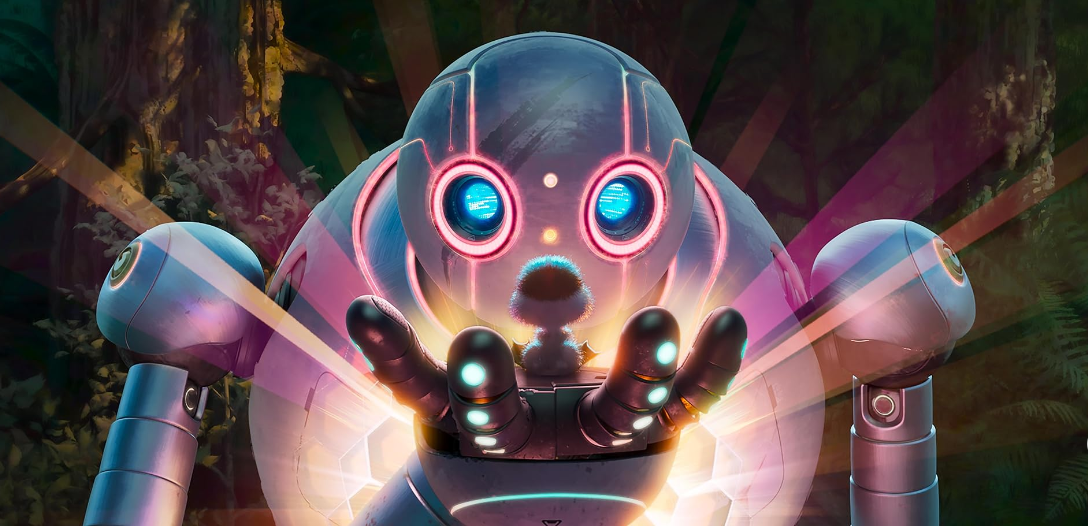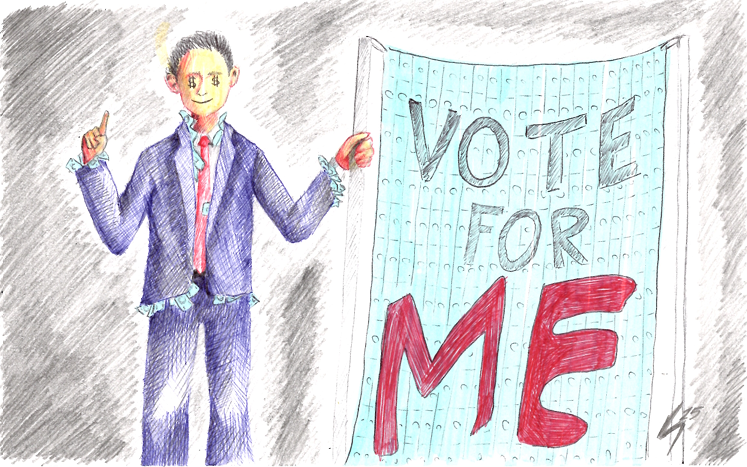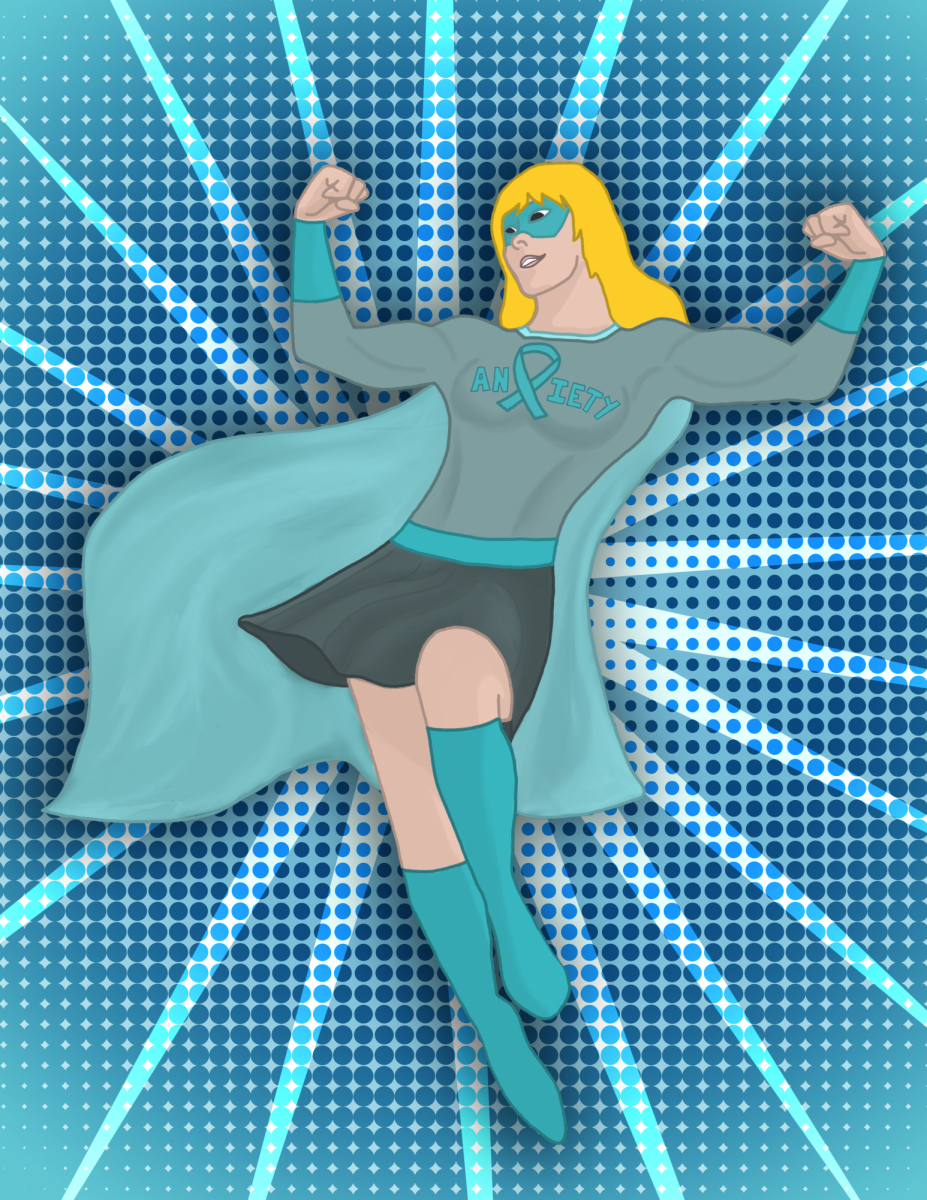Disclaimer: Spoilers ahead.
“The Wild Robot,” released on Sept. 27 and directed by Chris Sanders, revolves around a robot that crash lands on an island and is forced to raise a young duckling named Brightbill, played by Kit Connor.
I went to the theater expecting a solid, heartfelt family film adaptation that remains somewhat faithful to the source material. Fortunately, that is exactly what I received. Not only was the film a heartwarming tale of motherhood and the importance of family, but it served as a compelling twist of the classic “machine becoming human” trope with some gorgeous animation thrown on top.
While the book attempts to solve what a robot would do in the wilderness, the film answers what a robot would do with a gosling egg. The exposition and character development of ROZZUM Unit 7143, played by Lupita Nyong’o, is well-developed and retains the story’s adventurous essence as Roz — the robot’s nickname — explores its surroundings.
However, unlike the book, the movie focuses heavily on motherhood and the struggle of parenting in a harsh reality. This major divergence doesn’t necessarily hinder the film’s message, but it foreshadows the mistakes the movie makes by straying from the source material.
The novel managed to evoke significant emotion from Roz’s limited interactions with Brightbill while the robot was trying to find its place on the island. Conversely, the movie focuses less on survival by introducing Brightbill as the central conflict to weave a modern story of parenting.
The movie leans into modern commentary about differences being viewed as disgraceful, as Brightbill is an outcast of his natural environment. While this is a premise that has been utilized for decades, the movie subtly implies that the animals’ society hates unusual family structures.
This paints a more human picture of the wildlife, which doesn’t make sense because the animals in the film, given human emotions, would not be as simple-minded as what they would usually be. In other words, the animals are given human characteristics but act simply like animals. Because of this, their discrimination towards unusual creatures doesn’t make any sense.
In the novel, Roz garnered allies: Loudwing helps Brightbill fly, Mr. Beaver builds a log cabin, a deer named Tawny plants a garden. With the garden, Tawny believed the other animals would befriend Roz. In the movie, Roz is treated more poorly and has to rely on a possum and fox for maternal advice.
The emphasis on parenting in the film is encapsulated in Roz’s character, whose life suddenly revolves around Brightbill after her initial confusion. The robot, initially emotionless, becomes emotionally advanced and aware, something neither the film nor the novel properly explains.
You can sit there and tell me love made this robot somehow human-like, but I’d laugh in your face. I mean, really? That’s scientifically impossible. Something that advanced can’t possibly override their programming; it doesn’t make any sense. The novel at least keeps this abnormality discreet and implies that Roz may have always had maternal instincts programmed.
However, the movie loves to milk Roz’s independence from the other robots. Somehow, Roz is able to overcome its programming in the beginning to care for Brightbill, the end where the head of the retrieval team reprograms it and the mid-credit scene where it is reprogrammed again by the city’s engineers and somehow still recognizes Brightbill. This was probably the biggest logical nonsense of the entire film.
The ending of the novel also made more sense. The movie’s fight against the robots ignites no sense of payoff or stakes as they steamroll the whole retrieval squad by crushing them with trees and other objects. In the novel, the conflict was more grounded, with two animals crushing two RECO robots and the rest catching up to Roz. Roz sustains much more damage and loses limbs from a rifle blast. Only in a last ditch effort do the goslings finally save Roz by destroying the RECOs with their rifles. Unlike the movie, there was no head of the retrieval team to reprogram her and dampen the novel’s logic.
These were the largest errors of the film’s adaptation of Peter Brown’s novel. Other than the somewhat floppy approach to the theme of parenting, the character interactions between Roz and Brightbill always remain impactful, begging you to tear up. This is the film’s greatest strength that largely overrides its bugs in the programming.
The movie’s main objective is to underline unusual parenthood and the necessity of tolerance, which hits on five out of six cylinders.
Everything else, well, maybe the sequel will fix those problems.
Killian Netherton is an English and psychology sophomore and opinion writer for The Battalion.











Sona • Nov 22, 2024 at 9:25 am
I like the story and I love roz and duck also very very beautiful story love it
Observer • Nov 22, 2024 at 8:14 am
Observation –
If you restrict fictional writing to what can be scientifically verified you’ll wipe out a great deal of science fiction.
Not a well thought out review.